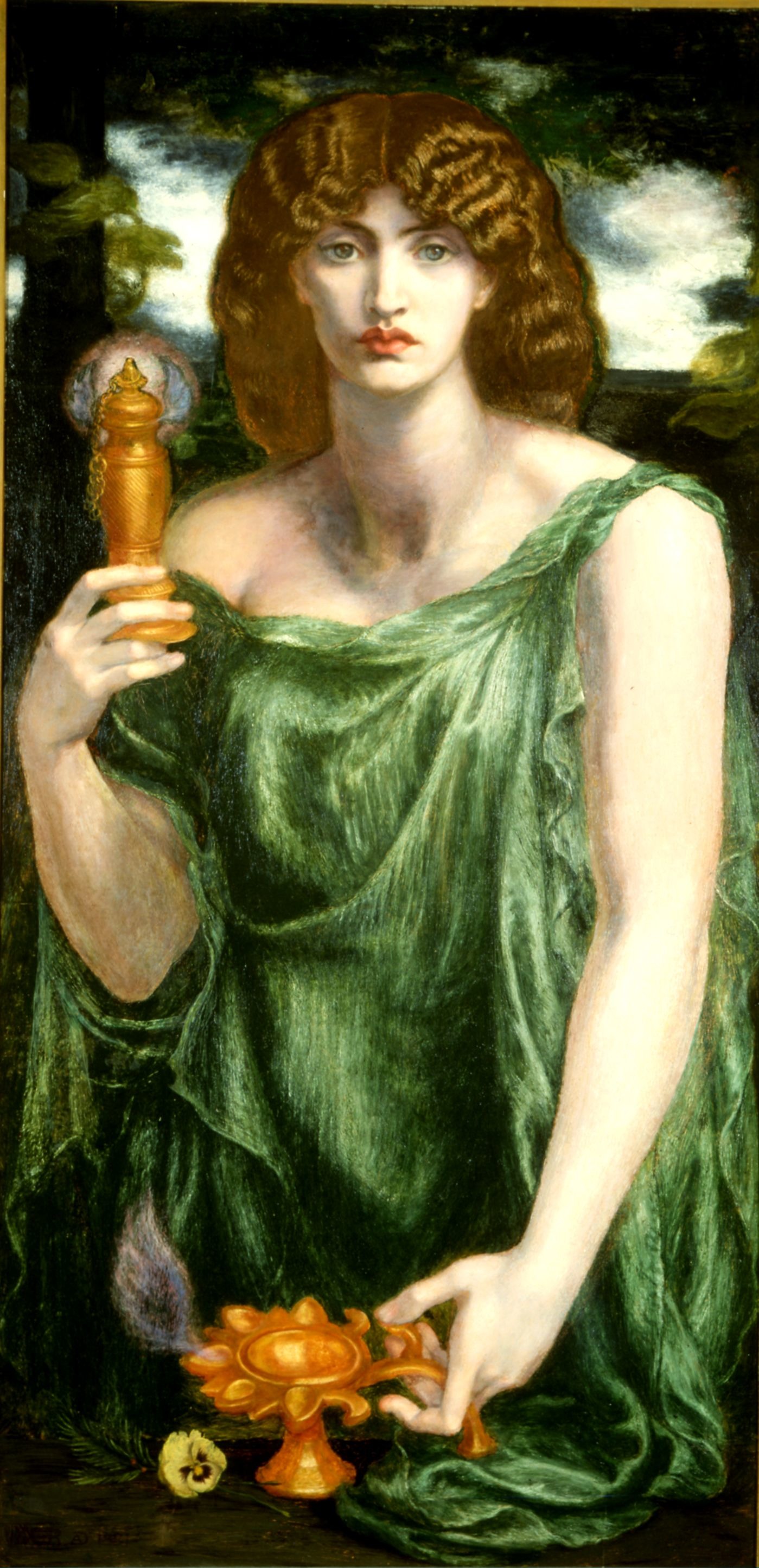R.P. Blackmur must have had Hilda Doolittle’s short poem “Oread” in mindwhen he declared her poetic style to be “cold, ‘Greek,’ fast, and enclosed” (ANTH 393). The title creates the addressee of the poem and sets up an apostrophe to the ancient Greek mountain nymph. The nymph becomes the muse whom the poet must invoke in order to capture, in an image, the mountain scene that she describes.
The comparison of the mountain to a sea sets up much of the language as well. The speaker asks Oread to “whirl,” to “splash,” and refers to Oread’s “pools of fir” (2, 3, 6). This is all very water-related language. The speaker refers to himself in the first person plural point of view. It is “our rocks” and he asks Oread to “cover us” (4, 6). I say he just for the sake of efficiency. Who the speaker is, exactly, is unclear. It could be the poet and other witnesses to the scene. It could be one mountain in a chain of mountains wishing to be covered in life. While this seems mostly like critical writing, it helps to know the poem before trying to imitate it.
“Mnemosyne”
Seep in, lake—
Seep into your crevices,
Work your fissures
On our concrete,
Send your blue over us,
Blend us into riverbed.
The basic idea of this imitation is that a Dam is the speaker and Memory is compared to a lake, man-made or natural, that the speaker wishes to see destroyed so that memory can flow freely again. I tried to maintain HD’s repetition of “whirl” in lines one and two and “pines” in lines two and three (not the words themselves but the fact that the are repeated). I also tried to maintain the idea, especially in the last two lines that the speaker is being covered. It also seemed important that most of the lines began with a request so I tried to maintain that as well. I’m not sure that blue is the right color for memory, but it’s an imitation after all.


It is of course very important to understand something before one imitates it; creative imitation is itself a critical act. What strikes one about H.D.’s poem is the surprising juxtaposition–or almost simultaneous relation–of two images as one: pointed pines and waves. Those two things aren’t connected in any logical way as a dam is logically related to the water held at bay on one side and the river on the other. In that sense, your imitation misses the mark just slightly–but then it is its own poem, so you have some creative freedom. This is all to say that sometimes reading an imitation helps one understand what makes the original so distinct.